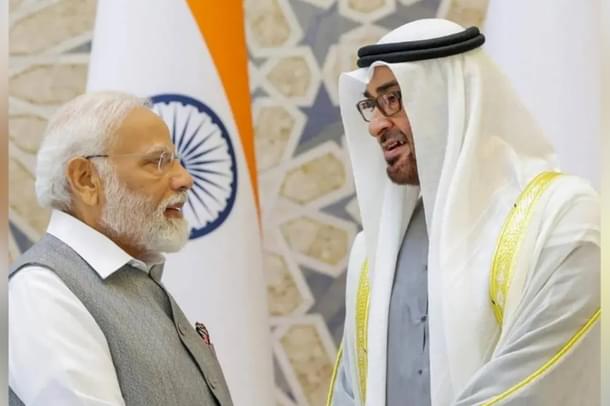World
Interlinking Payment Systems: RBI And UAE Central Bank Sign MoUs For Seamless Transactions
Swarajya Staff
Jul 17, 2023, 01:15 PM | Updated 01:20 PM IST
Save & read from anywhere!
Bookmark stories for easy access on any device or the Swarajya app.


India has taken a significant step towards increasing the circulation of the rupee in the Gulf region.
This was achieved through the signing of two memoranda of understanding (MoU) between the Reserve Bank of India and the Central Bank of the United Arab Emirates.
The agreements were witnessed by UAE President Sheikh Mohamed bin Zayed Al Nahyan and Prime Minister Narendra Modi, who was on a day-long visit to the Gulf country on his way back from France.
According to an official press release by RBI, the first agreement between the RBI and the UAE Central Bank aims to establish a framework that promotes the use of local currencies, specifically the rupee and dirham, for cross-border transactions.
This move is expected to facilitate smoother financial transactions between the two countries. The External Affairs Ministry released a statement highlighting this development.
In addition to the currency agreement, the two central banks also signed an MoU to interlink their payment and messaging systems.
This collaboration will enhance the efficiency and effectiveness of their respective systems, making it easier for individuals and businesses to conduct financial transactions. The Ministry emphasized the importance of this agreement in further strengthening the financial ties between India and the UAE.
The joint statement issued after the visit emphasised “The leaders expressed their interest in strengthening cooperation in the payment systems area by enabling integration between cross-border transactions between the UAE and India more efficiently. Such cooperation will also include the mutual acceptance of domestic card schemes by interlinking national card switches. Integration between these systems will enhance access to payment services for the benefit of the citizens and residents of the two countries”.
Against the backdrop of Indian entities initiating payments in yuan to Russian energy majors, two agreements have been signed between the central banks.
These agreements are expected to further promote the trend of conducting business in local currencies. This trend gained momentum after the Ukraine crisis began in February 2022.
In addition to the Memorandums of Understanding (MoUs) on trade in local currencies, the leaders also witnessed the signing of an MoU for the establishment of a branch of the Indian Institute of Technology-Delhi in Abu Dhabi.
During the visit, Prime Minister Modi also had a meeting with Dr Sultan Al Jaber, President-designate of CoP28 and Group CEO of Abu Dhabi National Oil Company.
The Prime Minister was briefed by Dr Jaber on the UAE's approach to the upcoming meeting. India expressed its full support for the UAE's COP-28 Presidency, according to the Ministry.
After a significant rise in India-UAE trade to $85 billion in 2022, the UAE is now India's third-largest trading partner for 2022-23 and the second-largest destination for Indian exports, as per the External Affairs Ministry.
According to the Ministry, bilateral trade has increased by around 15 per cent since the CEPA came into effect on 1 May 2022.
The discussion also covered the agendas of various groupings, including I2U2 (India, Israel, UAE, and USA) and the UAE-France-India trilateral cooperation.
Both sides are working together with other powers in these collaborations.





